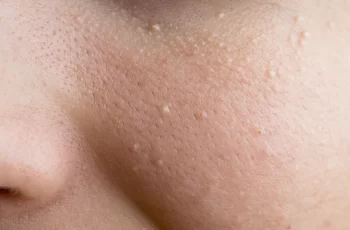
Diastema- The Mighty Tooth Gap Hype
For decades people have sought dental professional help to closing an existing gap between their teeth and get a normal, if not a perfect smile. But have you heard of the exact opposite? Creating a gap between your teeth? And if you have, what was the first thing that crossed your mind?
Mine was: “you’ve got to be kidding me!” while my jaw dropped with disbelief. But I am an ambassador of healthy and functional teeth, as well as prevention of tooth loss and gum disease. I would say it’s quite the normal reaction. I have been asked many times by patients, friends, acquaintances what are the treatment options for gaping teeth, but not one inquiry into how to create an interdental space was made.
Diastema is most commonly noticed between the two front teeth (midline diastema) and it appears as a gap. It may be hardly noticeable on some or quite obvious on others. Think about a friend, maybe your favourite celebrity, a catwalk model, or even a family member who has such a gap between their teeth. Or more gaps. Many find that cute, unique, different, sexy, or unusual, ugly, unappealing, abnormal. Feelings are mixed. But with a new dental trend emerging, fuelled by social media and standards of beauty, many women, in particular, are seeking information and advice on how to get these gaps.
“It’s better to prevent than cure!”
It is important to understand that the reason we treat diastemas in adults it’s mainly because their appearance wasn’t prevented in childhood and/or adolescence years. The causes of a diastema are:
Oversized labial frenum
Undersized teeth in relation to the jaw size
Undersized teeth in relation to the arch length
Dentition development
Missing teeth
Gum disease and tooth loss
Hereditary factors
All the above causes occur in the early years of tooth development in children and corrected by:
Orthodontic treatment (dental braces)
Surgical treatment (frenectomy)
Behaviour changing (e.g. thumb sucking)
If no such steps are taken then an adult is left with a permanent gap which one can choose to correct later in life by either:
Orthodontic treatment (fixed/removable braces, permanent retainers)
Veneers
Dental bonding
As you may have noticed, closing a gap is a dental procedure aimed at health and functionality of the dental apparatus, and it only becomes an aesthetic matter in adulthood.
Closing a gap sounds easy, but it is a very complex process and comes with a lot of challenges and effort from both dental professionals and patients as it involves:
Long term treatment (months, years for patients with orthodontic appliances)
Very good oral hygiene (extra time spent, specific tools and techniques applied)
Pain and discomfort
Many visits to the dentist, dental hygienist and ortho specialist (sometimes even a dental surgeon)
Extra care when biting (For teeth restored with veneers, dental bonding)
Gum disease (Of teeth restored with veneers)
Financial burden (Can be very expensive)
Outcomes (The final result can’t be always predicted and there is no guarantee your expectations will be met).
The implications are many and this small big picture is meant to be helping you understand that this is not a straightforward thing that would happen overnight, nor snapping your fingers. Now, with this information in mind try to imagine what creating a diastema would involve.
“If it ain’t broke, don’t fix it!”
It’s a well-known proverb, but don’t wise people know best? We like to believe that we, dental professionals, are knowledgeable and wise when it comes to saving teeth and maintaining your mouth healthy, functional and beautiful. Though there is a lot of research and clinical data on “gap closure” and its results, there is none when it comes to “creating a gap or gaps”. Therefore, we have to be sensible and cautious when we decide to consider or agree to offering such treatment to patients and the only available ones, at the moment, are:
Orthodontic treatment (fixed/removable braces, permanent retainers)
Veneers, dental bonding
And now please note that the following long list of treatment implications remains the same. But the most important things you might want to take in consideration are:
Your general face appearance will change dramatically
Impediment of speech will occur (e.g. lisping)
Tongue thrusting habit may occur which can lead to teeth’s position modification with time
Saliva, liquids may be difficult to be retained in your oral cavity and can lead to involuntarily “spitting “
Gum disease may develop
Reversing the process may not be an option
And least, but not last, remember that:
“Trends rise and fall”
Many trends are like the stock market: unforeseen and volatile. They create insecurities and unrealistic expectations, or encourage good, healthy habits and personal acceptance. Social media platforms abound in comments of frustrated people who hate their gaping teeth and want that changed; they also abound in comments of happy people who love their gaping teeth and wouldn’t change that for the world. But if you have an amazing set of healthy, straight, white teeth? Would you get gaps to look more cute, unique, different, sexy, or unusual, ugly, unappealing, abnormal? You are at least one of these to someone else or to yourself already. So what’s there to change? And more importantly: why?


